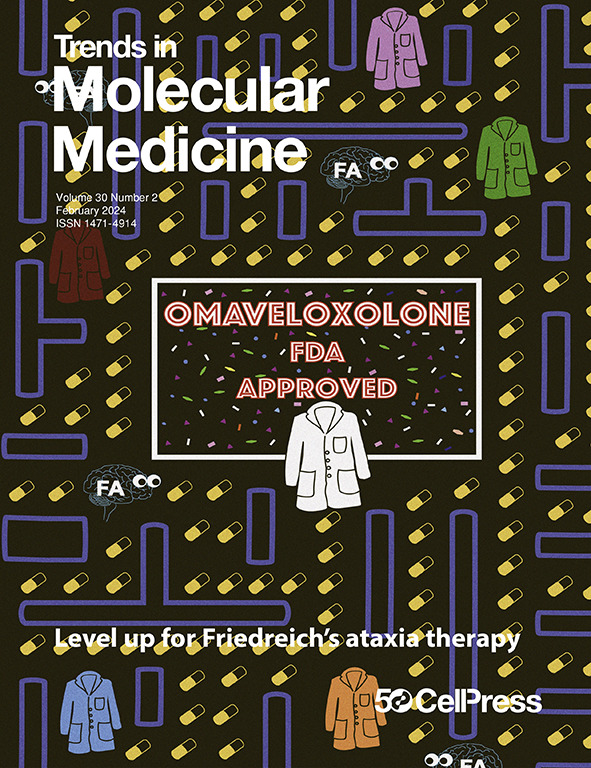3-O-acylated 胆汁酸:新陈代谢的破坏者还是协调者?
IF 12.8
1区 医学
Q1 BIOCHEMISTRY & MOLECULAR BIOLOGY
Trends in molecular medicine
Pub Date : 2025-02-01
Epub Date: 2024-06-25
DOI:10.1016/j.molmed.2024.06.003
引用次数: 0
摘要
本文揭开了新陈代谢的神秘面纱,探讨了 3-O-acylated 胆汁酸,特别是 3-O- succinylated 胆酸(3-sucCA)和 3-acetylated 胆酸(3-acetyCA)如何分别被肠道微生物均匀乳杆菌(Bacteroides uniformis)和小克里斯滕森氏菌(Christensenella minuta)修饰,从而扰乱或协调我们的新陈代谢过程,为代谢功能障碍相关性脂肪性肝炎(MASH)和 2 型糖尿病(T2D)等疾病提供新的治疗途径。本文章由计算机程序翻译,如有差异,请以英文原文为准。
3-O-acylated bile acids: disrupters or harmonizers of metabolism?
Unveiling a metabolic mystery, this article explores how 3-O-acylated bile acids, specifically 3-O-succinylated cholic acid (3-sucCA) and 3-acetylated cholic acid (3-acetyCA), modified by gut microbes Bacteroides uniformis and Christensenella minuta, respectively, may either disrupt or harmonize our metabolic processes, offering novel therapeutic avenues for conditions such as metabolic dysfunction-associated steatohepatitis (MASH) and type 2 diabetes mellitus (T2D).
求助全文
通过发布文献求助,成功后即可免费获取论文全文。
去求助
来源期刊

Trends in molecular medicine
医学-生化与分子生物学
CiteScore
24.60
自引率
0.00%
发文量
142
审稿时长
6-12 weeks
期刊介绍:
Trends in Molecular Medicine (TMM) aims to offer concise and contextualized perspectives on the latest research advancing biomedical science toward better diagnosis, treatment, and prevention of human diseases. It focuses on research at the intersection of basic biology and clinical research, covering new concepts in human biology and pathology with clear implications for diagnostics and therapy. TMM reviews bridge the gap between bench and bedside, discussing research from preclinical studies to patient-enrolled trials. The major themes include disease mechanisms, tools and technologies, diagnostics, and therapeutics, with a preference for articles relevant to multiple themes. TMM serves as a platform for discussion, pushing traditional boundaries and fostering collaboration between scientists and clinicians. The journal seeks to publish provocative and authoritative articles that are also accessible to a broad audience, inspiring new directions in molecular medicine to enhance human health.
 求助内容:
求助内容: 应助结果提醒方式:
应助结果提醒方式:


